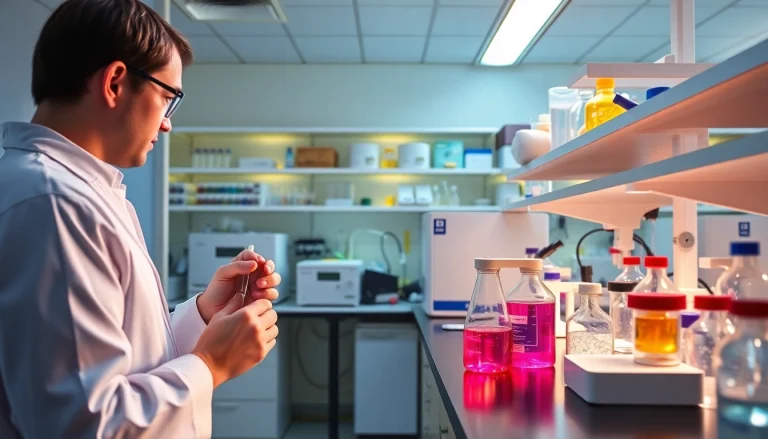
Understanding Plagiarism and Its Consequences
In an era where the internet makes information widely accessible, understanding plagiarism and its implications is crucial for students, educators, and professionals alike. Not only is plagiarism regarded as unethical, but it also carries serious academic and legal repercussions. This article aims to delve into the nuances of plagiarism, elucidating its definitions and consequences while navigating through the functionalities and features of effective plagiarism detectors.
What Constitutes Plagiarism?
Plagiarism involves using someone else’s work, ideas, or intellectual property without proper acknowledgment. It can manifest in various forms, including:
- Direct Plagiarism: Copying another source word-for-word without citation.
- Self-Plagiarism: Reusing one’s own previously submitted work without disclosure.
- Partial Plagiarism: Incorporating parts of someone else’s work into your own while omitting citations.
- Accidental Plagiarism: Failing to cite sources correctly, often due to negligence or misunderstanding.
Understanding these categories of plagiarism is vital in identifying and avoiding such pitfalls when preparing academic and professional documents.
The Impact of Plagiarism in Academia
The consequences of plagiarism in academic settings can be severe. Students found guilty of plagiarism may face disciplinary actions ranging from failing grades on assignments to expulsion from educational institutions. For educators, instances of plagiarism can erode trust in academic integrity, diminish the credibility of institutions, and influence the value of qualifications. Beyond academia, professionals who engage in plagiarism risk damaging their careers and reputations.
Common Misconceptions about Plagiarism
Several misconceptions surrounding plagiarism can exacerbate the likelihood of unintentional occurrences:
- “It’s okay to use others’ ideas as long as I change the wording”: Paraphrasing does not eliminate the need for citation. Without proper attribution, it can still be considered plagiarism.
- “Plagiarism is only about copying text”: Plagiarism applies to any form of intellectual property, including data, images, and even entire concepts.
- “I can avoid plagiarism by using more than one source”: Use of multiple sources without proper citation can still lead to plagiarism. Each source must be credited individually.
How a Plagiarism Detector Works
Plagiarism detectors are sophisticated tools designed to identify instances of potential plagiarism by analyzing texts against various databases and published materials. Understanding how these tools work helps users make informed choices about academic integrity.
Technological Basics of Plagiarism Detection
Plagiarism detection tools typically rely on a combination of algorithms and databases. They use pattern recognition techniques to identify similarities in text and analyze linguistic structures. Most tools scan vast online resources, including:
- Academic journals
- Websites and blogs
- Published books
- Other databases and student submissions
These tools then compile a report outlining the percentage of text that matches existing content, helping users assess originality and appropriate citation.
Advanced Features to Consider
Modern plagiarism detectors come equipped with various advanced features aimed at enhancing their accuracy and usability:
- Real-Time Analysis: Many tools allow users to check their work while writing, providing instant feedback on originality.
- Multilingual Support: Some advanced detectors cater to non-English texts, broadening their applicability in diverse linguistic settings.
- Source Tracking: Premium tools often provide links to original sources, making it easier for users to verify and cite content correctly.
Limitations of Plagiarism Detection Tools
While plagiarism detectors are indispensable for maintaining academic integrity, they are not foolproof. Some of the limitations include:
- False Positives: Detectors may mistakenly identify common phrases or widely-used terminology as plagiarism.
- Database Limitations: Not all detectors cover every source, potentially overlooking instances of plagiarism from lesser-known documents.
- Inability to Detect Self-Plagiarism: Most tools do not track submission histories, making it challenging to identify self-plagiarism effectively.
Top Features of an Effective Plagiarism Detector
As the market for plagiarism detection tools continues to expand, understanding the essential features of an effective detector can guide users toward selecting the right option for their needs. Here are some key features to look for:
Real-time Analysis Capabilities
Effective plagiarism detectors provide real-time analysis, allowing users to receive immediate feedback as they write. This capability is especially beneficial to students and professionals who frequently produce written content, enabling them to make necessary adjustments and properly cite sources as they go along.
User-Friendly Interface
An intuitive and user-friendly interface can significantly enhance the user experience. The best tools feature simple dashboards that allow users to upload documents easily, perform checks, and interpret results without requiring extensive technical skills.
Integration with Other Writing Software
Seamless integration with commonly used writing software, such as Microsoft Word, Google Docs, and other text editors, makes it easier for users to utilize plagiarism detection tools within their preferred working environments. This integration minimizes disruption to the writing process, fostering a more productive workflow.
Comparing Leading Plagiarism Detectors
With numerous plagiarism detectors available on the market, understanding the differences in their offerings can help users select the right option for their needs. Here’s an analysis of some popular choices:
Free vs. Paid Options
Many reliable plagiarism detectors offer both free and paid versions. Free options, while helpful, often come with limitations, such as restricted word counts and fewer features. Paid versions typically provide comprehensive analysis, access to a larger database, and premium features like citation assistance and detailed reports. Choosing between free and paid options largely depends on the frequency of usage and the required depth of analysis.
Key Competitors and Their Offerings
Some of the leading plagiarism detectors include:
- Grammarly: Known for its grammar-checking capabilities, Grammarly also offers a robust plagiarism checker that compares texts against billions of online sources.
- Scribbr: This tool is specifically tailored for academic audiences and boasts advanced detection capabilities, posing a reliable solution for student essays and dissertations.
- Copyleaks: Recognized for its ability to check for original sources of content, Copyleaks also analyzes code and AI-generated text, catering to a diverse audience.
How to Choose the Right Tool for Your Needs
When choosing a plagiarism detection tool, consider factors such as:
- The frequency with which you produce written content.
- The level of detail you require from your reports.
- Your budget and whether investing in a paid option aligns with your needs.
- Integration capabilities with your preferred writing software.
Best Practices for Avoiding Plagiarism
While plagiarism detection tools play a vital role in identifying potential plagiarism, understanding how to avoid plagiarism altogether is equally crucial. Implementing best practices can significantly reduce the chances of engaging in any form of plagiarism.
Effective Citation Methods
Proper citation is the cornerstone of maintaining academic integrity. Familiarize yourself with different citation styles (e.g., APA, MLA, Chicago) and adhere to the guidelines for each. Always attribute sources for ideas, quotes, and data to avoid any appearance of plagiarism.
Utilizing Paraphrasing Tools
Paraphrasing tools can enhance writing by offering alternative phrasing while maintaining the original meaning. However, it’s crucial to ensure that paraphrased content is still properly cited. Utilizing such tools judiciously can help in presenting information uniquely.
Creating Original Content Strategies
Creating original content strategies can involve brainstorming unique ideas, conducting thorough research, and synthesizing information from various sources into original insights. Establishing strong writing habits and encouraging creativity can minimize reliance on external sources and reduce the risk of plagiarism.
In conclusion, possessing a robust understanding of plagiarism, utilizing effective plagiarism detectors, and adopting best practices in writing can foster academic integrity. As we navigate through digital content creation, awareness and proactive measures become critical in upholding ethical standards. By equipping oneself with knowledge and the right tools, individuals can significantly mitigate the risks associated with plagiarism, ensuring their work remains original and credible.






